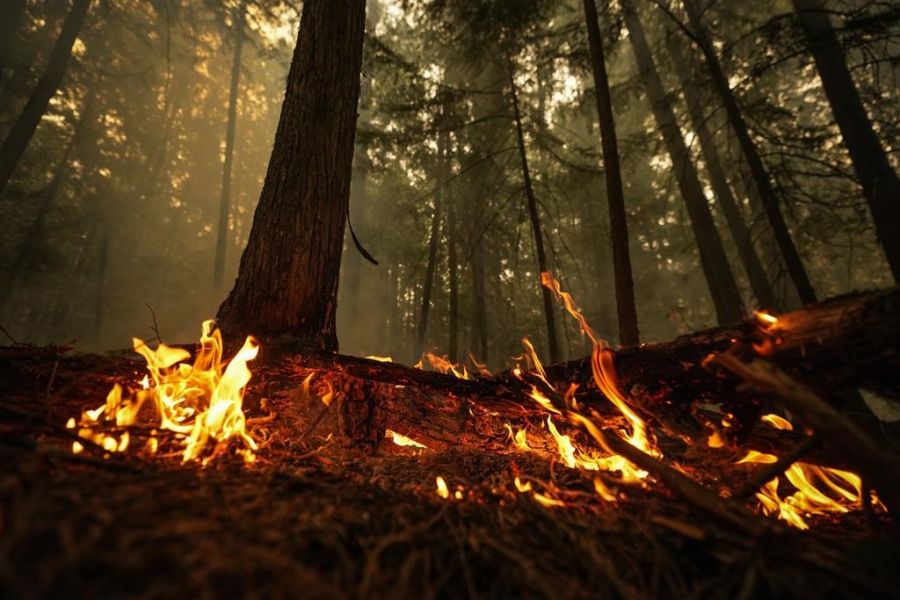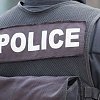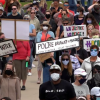(UPDATE: May 11 @ 12:00 pm) - The wildfire forcing thousands to evacuate from a northeast British Columbia town has doubled again in size as the blaze grows merely a few kilometres west of city limits.
The BC Wildfire Service says the Parker Lake fire near Fort Nelson, BC, has reached almost 17 square kilometres in size overnight, up from the eight square kilometres reported late Friday.
The wildfire has also knocked out 911 service and disrupted telecommunications in Yukon and Northern BC, with officials in the territory asking residents who need help in Whitehorse to go directly to the local RCMP detachment, fire halls or ambulances stationed at various parts of the city.
The Parker Lake wildfire was discovered Friday with a reported size of half a square kilometre at 5:25 pm but grew quickly to four square kilometres by 6:30 pm before expanding again.
The fire has forced the Northern Rockies Regional Municipality and Fort Nelson First Nations to order evacuations in the area, with the region’s roughly 3,000 residents told to flee to Fort St. John some 380 kilometres to the southeast.
Fort Nelson is located in the far northeastern corner of BC about 1,600 kilometres from Vancouver.
The BC Wildfire Service says the blaze is suspected to be caused by human activity, adding the fire was "highly visible" from Fort Nelson.
The Northern Rockies Regional Municipality originally estimated the fire to be burning about 12 kilometres west of Fort Nelson, but BC Wildfire Service maps show the blaze’s coverage has reached about 6 kilometres west of city limits.
The regional municipality says evacuees travelling south are eligible for free fuel at Buckinghorse River Lodge, 176 kilometres south of the town on the Alaska Highway, with proof of Fort Nelson residency.
Environment Canada says rain is not in the forecast for Fort Nelson until Wednesday evening, with a 60% chance of showers for that night and Thursday.
(Original story: May 11 @ 9:00 am) -Thousands of people in northeast British Columbia were ordered to evacuate and flee south late Friday as a fast−growing wildfire neared the town of Fort Nelson.
The evacuation order was issued by the Northern Rockies Regional Municipality and Fort Nelson First Nations around 7:15 pm, with residents being told to flee to Fort St. John, 380 kilometres away.
The communities were being threatened by an out−of−control wildfire that the municipality said was about 12 kilometres west of Fort Nelson after it exploded in size late Friday.

Fort Nelson and the Fort Nelson Indian Reserve, in the far northeast corner of BC about 1,600 kilometres from Vancouver, have a combined population of about 3,000.
The BC Wildfire Service said the blaze measured eight square kilometres in size and was "highly visible" from the town, as groundcrews and nine bucketing helicopters battled to control it.
The service said that in addition to wildfire service firefighters, members of the local fire department and the RCMP were responding, and air tanker support had been assigned.
The municipality said the fire posed an "immediate threat to life, health and property."
"Residents are advised to evacuate the area immediately and begin driving south towards Fort St. John," it said.
"If you have a recreational vehicle or your own vehicle, fuel stations are being planned along the route south."
The municipality said drivers should bring any additional passengers they could.
The fire grew rapidly late Friday. The wildfire service had said in a social media post at 5:25 p.m. that the suspected human−caused fire was half a square kilometre in size, but by 6:30 p.m. it was listed on the service’s website as measuring four square kilometres, before that doubled again.
Less than two hours before the full evacuation was ordered, the municipality had been ordering residents in neighbourhoods west of the town to muster in the community’s recreation centre.
That plan was swiftly overwhelmed.
The fire was fanned by a dry cold front that the wildfire service said had been expected to cross the Fort Nelson zone mid−afternoon Friday.
"While no lightning is expected during this time, wind gusts may exceed 70 kilometres per hour and shift direction rapidly," the service had said on Thursday.
It said the conditions were "likely to contribute to continued new growth on holdover fires from the 2023 season," but the blaze threatening Fort Nelson is a new fire, detected on Friday.
"The top priorities of the BC Wildfire Service are life, health and safety of responders and public. The Prince George Fire Centre is actively working with municipal partners, industry and other government ministries to ensure these priorities are achieved," it said.
The service said an incident management team would assume command in the fire zone.
DriveBC said the Alaska Highway, also known as Highway 97, had been shut due to the fire.
BC Premier David Eby said on social media platform X that he was "thinking of people evacuated from Fort Nelson and Fort Nelson First Nation as wildfire activity grows close to their communities."
"BC Wildfire Service is responding and we will be working around the clock to support people," he said.
The Yukon government said late Friday that the wildfire near Fort Nelson had caused a 911 and telecommunications outage in the territory affecting internet, landlines and cellphones. It said a geomagnetic storm was potentially affecting satellite phones as well.
Residents needing to report an emergency were told to go to the nearest RCMP station or detachment, health centre or hospital.

















